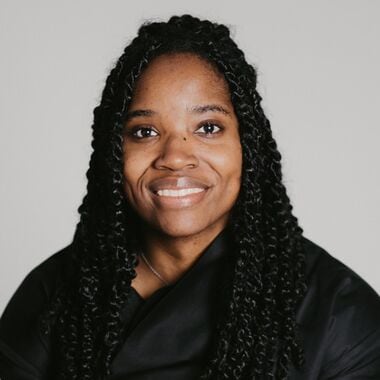No, I really love learning so much so that being a teacher, uh, being an educator feels like such a great fit for me. My name is Jasmine Maze and I'm the chief of education and learning for an ed tech nonprofit called Kinfolk. I'm the youngest of three girls, and our mother specifically made sure to make sure that we approached life in a way that we were always learning and that, you know, we embraced parts of our identity. Knowing that we were black women, we would be seen as black women to really take a lot of, of pride in that My father was a substitute teacher. I had aunts also in the world of education and a grandmother who was a nurse, and so I think I also grew up watching what it meant for folks to provide services to other people, social goods, and certainly my parents did a great job instilling in me the importance importance of education. I went to school with plenty of upright, uh, you know, gifted individuals, but it definitely relates to the opportunities that are put in front of you. And so part of that is just the luck that teachers really saw something in me. Um, but that's part of what drove me to something like Teach for America because it didn't necessarily feel fair. I clearly love to apply myself into, in the curiosity of it. So I think I was a, a, an ideal student, but I don't think that being an ideal student should necessitate you getting opportunity, if that makes sense. And so when it became time for me to, to head into education, that was something that was heavy on my heart, is that every student deserves to get the opportunity put in front of them and should be encouraged and, you know, should be, um, what's the word should be poured into. I love language. I love a Spanish. I became a Spanish teacher and it was, and it was, it was phenomenal. I gotta take kids to, to Spain, really build out the, the program at the school, Spanish one to, um, like that being the only offering at the school to having Spanish two with Spanish three, and really having kids invest in the program so that they could, uh, go in this abroad program being placed at a school where, I wanna say there we were a group of four, I think CFA in the school setting in general. So that cohort of folk really helped me, um, as well in my early years developing out, being a teacher because we could really share in our practices and there were other folks too, uh, within Teach for America, right? Having those touch points. Being able to form that community with people I think is really important. So finding other teachers that are a part of TFA, um, who share your values, who share your passion and your interest in education is really important, really getting your footing. Um, so in terms of being a, a teacher, they really prepared me on that end. prepared me on that end. Um, and then when I became a, a principal, I hired new core members. I also hired amongst alumni, um, like myself. And together we were able to transform, um, a public high school, uh, from a failing institution into a thriving one. I, I really think that teaching is a skill, right? And everybody, every, everyone can use it. It's a very marketable skill, but you could teach other people things. If you could teach yourself things, then you're, you put yourself in a really powerful position. And so I think that's probably the number one shocking skill was like, wow, I can teach when I, you know, set out an, an objective and I approached the room, um, and think of creative ways to, to lay up that objective. I'm able to do that successfully, and that feels really good. And applying that to others and, and still to myself, um, it's remained my favorite thing to do. I love to learn and Teach For America helped me discover that. The work I do now is I work for, again, it's for a, again, it's an EdTech nonprofit. It's called Kinfolk, and we build essentially digital monuments and augmented reality to underrepresented history and figures. So it could be to anyone who is black, brown, indigenous, queer. Our digital monuments are only exist within the app, but that doesn't prevent you from being able to imagine what that thing would look like with that technology. It's perfect not only for a history class, but for, you know, an art class, a technology class, an English class, anywhere where you want to use our ancestors or stories to help students understand who has been here before you.
